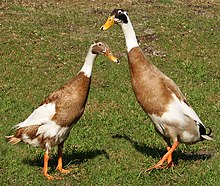They believe the four men, found in the 1990s buried near Croyde, North Devon, probably drowned in a shipwreck. But clues from the skeletons and their buttons suggest they were probably not seamen but wealthy passengers or merchantmen.
The new information about the skeletons has just been published by the Devon Archaeological Society.
A report by Tim Gent, of Exeter Archaeology, says the burials were discovered between 1996 and 1998 at Saunton Down End.
Two of the skeletons were found with finely decorated pewter buttons. This suggests they would have benefited from relatively elevated positions in life, says the report.
Bone buttons found with the two other skeletons suggest they were somewhat lower on the social scale.
Charlotte Coles, from Exeter Archaeology, studied three of the skeletons and concluded that two of the men were aged between 35 and 40 years when they died. The third, the tallest man at 6ft, was aged 25-30.
She said in the report: "If these were naval seamen, or men who spent a great deal of time at sea, more severe trauma or illness might be expected, with falls, breaks and infection being very common among sailors."READ MORE AND SEE AT BARNSTAPLE MUSEUM ENGLAND



 they say you are never too far from the weird and wonderful in the world and i discover one this phenomenon the other day whilst walking my jack russell-mitzi -around my local estate.whilst walking along glebe meadows ,holsworthy,devon i spotted a duck standing by the gate and a cat sitting beside it i managed too talk to the owner who told me the duck was a 10 month year old indian runner duck who was quite tame as liked sitting by the fire and escorting the postman to the gate.
they say you are never too far from the weird and wonderful in the world and i discover one this phenomenon the other day whilst walking my jack russell-mitzi -around my local estate.whilst walking along glebe meadows ,holsworthy,devon i spotted a duck standing by the gate and a cat sitting beside it i managed too talk to the owner who told me the duck was a 10 month year old indian runner duck who was quite tame as liked sitting by the fire and escorting the postman to the gate.